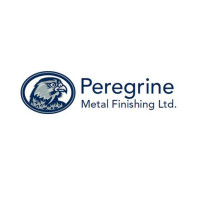Zinc Nickel Plating in the Automotive Industry: Enhancing Durability and Corrosion Resistance

Strong 8k brings an ultra-HD IPTV experience to your living room and your pocket.
In the relentless quest for materials that withstand harsh environments while maintaining structural integrity, the automotive industry consistently turns to advanced solutions like zinc nickel plating. This innovative technique not only enhances the durability of automotive components but also significantly boosts their resistance to corrosion.
In this article, we delve into the role of zinc nickel plating companies in the automotive sector, exploring how they contribute to the longevity and reliability of vehicles.
The Significance of Zinc Nickel Plating
Zinc nickel plating is a type of electrolytic coating where a layer of zinc-nickel alloy is applied to a substrate. This alloy typically contains 85-88% zinc and 12-15% nickel, offering a robust barrier against corrosion and wear. The process has gained prominence in the automotive industry due to its superior corrosion resistance compared to traditional zinc plating, coupled with its ability to withstand high temperatures.
Enhancing Durability and Corrosion Resistance
Vehicles are constantly exposed to various corrosive elements, from saltwater and road salts to industrial pollutants. These conditions demand materials that can survive such aggressive environments without degrading. Zinc nickel plating stands out by providing exceptional protection in these scenarios. The plated components exhibit remarkable resistance to rust and corrosion, significantly extending the life span of vital automotive parts. This protective layer not only safeguards the metal underneath but also maintains its aesthetic appeal by preventing unsightly rust.
Applications in the Automotive Industry
The use of zinc nickel plating is widespread across the automotive sector. It finds applications in a plethora of components, including:
• Fuel Systems: Components within the fuel system are susceptible to corrosion due to constant exposure to diverse chemical substances. Zinc nickel plating ensures that these parts, such as fuel injectors and pumps, resist rust, thereby improving efficiency and safety.
• Brake Systems: Zinc nickel plating is employed on brake calipers and other brake components to forestall corrosion, a critical factor for maintaining braking performance over time.
• Suspension Systems: Parts within the suspension system, including springs and bolts, benefit greatly from zinc nickel plating, enhancing their resilience against wear and tear from road debris and weather conditions.
• Powertrain Components: The powertrain encompasses some of the most crucial components of a vehicle, including the engine and transmission parts. Zinc nickel plating offers them a shield against the corrosive byproducts of combustion and operation.
The Environmental Edge
Beyond its protective benefits, zinc nickel plating is also recognized for its environmental advantages. It emerges as a more eco-friendly alternative to cadmium plating, traditionally used on automotive components but flagged for its environmental and health hazards. The process of zinc nickel plating employs fewer toxic substances, aligning better with global efforts towards sustainable manufacturing practices.
The Road Ahead:
As the automotive industry marches towards greener and more sustainable practices without compromising on performance and durability, techniques like zinc nickel plating will continue to play a pivotal role. Its capacity to significantly enhance the longevity and resilience of components positions it as a key player in the future of automotive manufacturing.
As vehicle manufacturers and suppliers constantly strive for innovation, the adoption of zinc nickel plating reaffirms the industry's commitment to quality, safety, and environmental stewardship. The road ahead looks promising, with zinc nickel plating, along with other applications like sandblasting services, leading the charge in creating more durable, reliable, and corrosion-resistant vehicles for the future.
Note: IndiBlogHub features both user-submitted and editorial content. We do not verify third-party contributions. Read our Disclaimer and Privacy Policyfor details.


